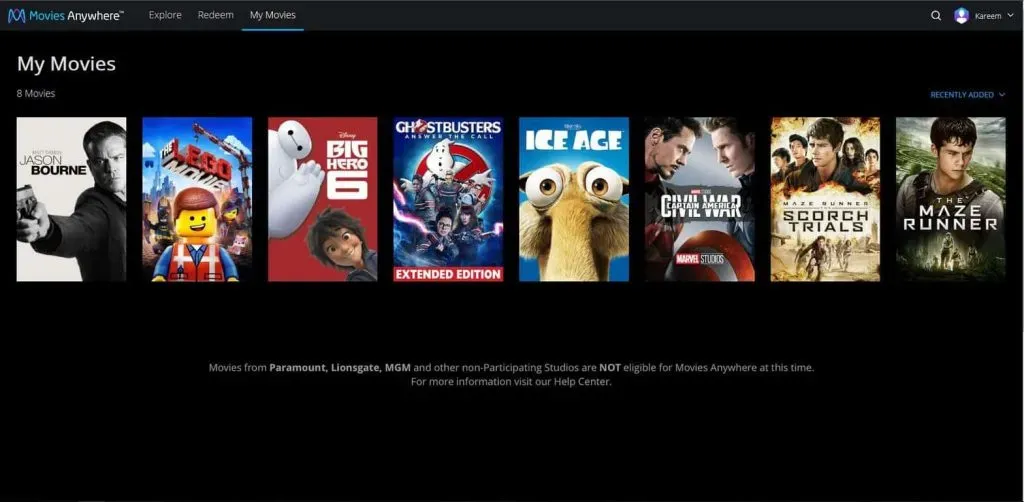Microsoft movie and TV content has officially ceased to be available for purchase or rent, marking a significant shift in how fans can consume digital media through the platform. This surprising announcement came with an update on both the Xbox and Windows pages, stating that as of July 18th, Microsoft has stopped selling new movie and TV content. Despite this abrupt change, existing customers are assured continued access to their previously purchased movies and shows on both Windows and Xbox devices, with the option to play personal videos as well. For many, this decision raises questions about alternatives in the streaming landscape, especially with major players like Apple and Google making similar moves earlier. If you’re looking to buy movies on Microsoft or find similar services, options like Amazon Prime Video or Fandango at Home may be worth considering.
The recent cessation of Microsoft’s movie and TV offerings brings to light an important transition in digital entertainment. With the company no longer facilitating sales of new titles on its platforms, users must seek alternative methods to enjoy their favorite films and shows. The termination of the Microsoft TV service signals a broader trend amongst tech giants, where the focus shifts towards streaming services and subscription models. For fans of Microsoft Xbox movies, this change means reassessing how they access content while still holding onto their existing libraries. As the market expands, there’s a growing need for consumers to explore other entertainment avenues for the latest releases.
Microsoft’s Shift in Movie and TV Content Offering
Recently, Microsoft announced a significant change in its entertainment strategy, ceasing the sale and rental of movies and TV shows through its platforms. This decision, effective from July 18th, has sparked varied reactions among users who relied on Xbox and Windows for their home entertainment needs. Existing customers can still access their previously purchased movies and shows on their devices, ensuring that not all content is lost. However, for users accustomed to the convenience of buying movies on Microsoft, this shift represents a considerable adjustment in their viewing habits.
The change mirrors a broader trend in the digital media landscape, where major players like Apple and Google have also pulled back from selling movies and TV content. By allowing continued access to previously bought titles, Microsoft maintains some degree of goodwill among its user base, alleviating immediate concerns about losing existing media. However, without the option for refunds or transferring content to other services, customers might feel trapped. This transition urges users to seek alternatives for sourcing their favorite films and shows, pushing them towards other platforms in the highly competitive streaming market.
Exploring Alternatives to Microsoft Movie and TV Services
With Microsoft’s recent shutdown of its movie and TV service, many users are left seeking alternatives for their entertainment needs. Notable among the recommendations are established platforms like Amazon Prime Video and Apple TV, both of which offer extensive libraries of movies and exclusive TV shows. These alternatives not only provide a range of current releases comparable to what users expected from Microsoft but also often come with additional perks, such as bundled subscriptions or discounts on new titles.
Moreover, Fandango at Home has emerged as a viable option for those looking to rent or purchase digital films. These platforms strive to fill the void left by Microsoft, suggesting that loyal customers should explore these various services that offer movie access without the hassle of lost purchases. As the streaming industry continues to evolve with competitive pricing and exclusive content, Microsoft users will find it crucial to adapt their viewing habits and familiarize themselves with these new alternatives to keep their entertainment experience intact.
What Happens to Your Microsoft Movies and TV Shows?
As part of the transition phase after Microsoft’s discontinuation of movie and TV content sales, existing customers have the reassurance that they can continue to access their previously purchased content. This includes the ability to stream or download these titles on both Xbox and Windows devices, ensuring a semblance of continuity. Unfortunately, the lack of a refund policy is a notable drawback, leading many users to consider how their previously viable library of digital media is now effectively frozen within Microsoft’s ecosystem.
For customers who frequently enjoyed using Microsoft’s platform for movie and TV shows, the implications of this abrupt policy change may feel daunting. The inability to transfer content to other services exacerbates this challenge, as users must now rethink their media consumption strategies. While it’s clear that the existing catalog remains accessible for now, the uncertainty surrounding future digital access is prompting viewers to proactively seek out alternative services and adjust their entertainment habits.
Streaming Services Alternatives for Microsoft Users
In light of Microsoft’s withdrawal from selling and renting movies and TV shows, users are urged to investigate available alternatives that can effectively replace their previous viewing options. Amazon Prime Video has emerged as a popular destination, offering a vast selection of films and shows, alongside the added benefit of free shipping on retail purchases for members. Apple TV also boasts a selection of new releases and original content that can help fill the gap left by Microsoft.
Another recommended alternative is Hulu, known for its diverse collection of current and past TV series, as well as films. Hulu’s service provides a flexible approach to entertainment, which can cater to various viewing preferences. Furthermore, exploring lesser-known streaming services can yield hidden gems and unique content that might not be readily available on mainstream platforms. Microsoft users must adapt swiftly to these alternatives to maintain their access to a rich library of digital entertainment.
The Future of Home Entertainment Without Microsoft
The recent decision by Microsoft to cease offering movies and TV shows has left many questioning the future of home entertainment in a rapidly evolving digital landscape. As traditional purchasing models continue to falter, the industry may witness a shift towards subscription-based services that boast extensive libraries and exclusive content. Netflix, for example, remains a dominant player in this space, constantly innovating and expanding its catalog to attract discerning viewers who seek premium entertainment options.
On the other hand, the potential for growth in streaming service alternatives could bring about fierce competition in content offerings, giving consumers more choices than ever before. Companies that prioritize customer feedback and content diversity are likely to thrive in this new environment. The absence of Microsoft in the direct selling space could catalyze an increase in service innovation, whereby each platform seeks to capture the loyalty and support of former Microsoft movie and TV service users.
Navigating the Transition from Microsoft TV Services
Users who depended on Microsoft’s movie and TV service face a critical transition period as they seek to reorganize their entertainment access. Adapting to different platforms means more than simply jumping to a new service; it could also involve creating new accounts, learning different interfaces, and resetting viewing habits. This transition may require some time and patience, as customers familiarize themselves with the unique features each provider offers.
Moreover, the user experience across platforms can significantly vary, influencing how easily someone might find and manage their favorite movies or series. Understanding subscription models, rental options, and digital rights on these services becomes essential for a smooth changeover. As users navigate this transition, having a clear plan and discerning their viewing needs can enhance their ability to maximize their new entertainment resources.
Impact of Microsoft’s Decision on the Digital Media Landscape
Microsoft’s abrupt cessation of selling movies and TV shows has not only affected its user base but has broader implications for the digital media landscape. Within the industry, this decision signals the shifting dynamics of content consumption where streaming reigns supreme over traditional acquisition methods. As companies adapt to changing viewer preferences, understanding the impact of such decisions can illuminate trends in how digital content is produced, distributed, and consumed.
The departure of a significant player like Microsoft from movie and TV content sales could set a precedent and encourage other platforms to realign their business models accordingly. This impact may catalyze emerging players or disruptors to seize the opportunity to fill the gap, focusing instead on creating compelling subscription offerings or unique content that captures the modern audience’s attention. Therefore, Microsoft’s shift could serve as a pivotal moment that reshapes the future trajectory of the media consumption ecosystem.
Customer Reactions to the Discontinued Microsoft Content
The reactions to Microsoft’s End of Service for their movie and TV offerings have been varied, with many users expressing disappointment and frustration. Loyal customers who have invested time and money into building a library of digital content feel disheartened, particularly given the lack of transferability or refund options. Social media buzz has been rife with opinions, highlighting concerns over digital rights and ownership in a world increasingly dominated by subscriptions.
Many former users are reflecting on the importance of options beyond established platforms, exploring how this experience might inform their choices in the future. The conversations around digital media ownership are gaining traction as more consumers reevaluate where they invest their entertainment dollars. This unexpected change serves as a reminder of the vulnerability inherent in digital media and the potential risks associated with relying heavily on a single vendor for movie and TV content.
Exploring Content Preservation After Microsoft’s Shutdown
Content preservation has become a key concern for users in the wake of Microsoft’s decision to pull away from selling movies and TV shows. Many individuals worry about what happens when the platforms they rely on decide to withdraw their support, leaving customers with inaccessible content. Although Microsoft maintains that existing purchased content will remain available, the wider discussion about digital media ownership continues to expand, prompting consumers to question their rights and options.
As users face this digital uncertainty, it’s imperative to consider how to safeguard their entertainment investments moving forward. Exploring platforms that offer greater transparency in terms of ownership and access could guide the development of future media consumption habits. Ultimately, as the digital landscape shifts, consumers will benefit greatly from understanding the implications of their entertainment choices and advocating for better rights in the industry.
Frequently Asked Questions
What happened to Microsoft movie and TV content services?
Microsoft has officially ceased selling or renting movies and TV shows as of July 18th. An update on the Xbox and Windows pages confirmed this sudden change.
Can I still access movies and TV shows I purchased on Microsoft?
Yes, existing customers can continue to access their previously purchased movies and TV shows on Windows and Xbox devices despite the shutdown of new content sales.
What should I do if I want to buy movies on Microsoft now?
Currently, there is no option to buy new movies on Microsoft as they have stopped selling new movie and TV content. It is advisable to consider alternatives like Amazon Prime Video or Apple TV.
Will Microsoft allow me to transfer my purchased movies to another service?
No, according to Microsoft’s terms of sale, there is no option to transfer your purchased movies or TV shows to another service.
What alternatives to Microsoft movie services do you recommend?
For streaming services alternatives, consider platforms like Amazon Prime Video, Apple TV, and Fandango at Home for the latest home entertainment releases.
Are refunds available for Microsoft movies or TV shows purchased?
No, Microsoft does not offer refunds for movies or TV shows that have been purchased prior to the service changes.
Does this change affect Xbox movie access for users?
Although Microsoft has stopped selling new content, players can still access and play their personal videos on Xbox devices.
What led to the shutdown of Microsoft TV services?
The decision to stop selling movies and TV shows coincided with broader business streamlining, including significant layoffs within Microsoft’s gaming division.
Can I keep using my Microsoft TV service functionalities?
Yes, Windows customers can continue to use playback and download functions for previously purchased content.
How can I keep up-to-date with changes to Microsoft movie and TV services?
For the latest updates regarding Microsoft movie and TV content, check the official Xbox and Windows support pages regularly.
| Key Points |
|---|
| Microsoft has halted the sale and rental of movies and TV shows as of July 18th, 2023. |
| Existing customers can still access their previously purchased content on Windows and Xbox devices. |
| There are no refunds or options to transfer purchased content to other services per Microsoft’s terms of sale. |
| Microsoft advises users to explore other entertainment services like Amazon Prime Video and Apple TV. |
| Earlier this month, Microsoft laid off approximately 9,000 employees, impacting the gaming division significantly. |
Summary
Microsoft movie and TV content has officially ceased to be sold or rented, marking a significant shift in their entertainment strategy. This decision reflects broader trends in the industry, where major players like Apple and Google have made similar moves. While existing customers retain access to their previously purchased content, they must adjust to a landscape with no refunds or transfer options. This change encourages users to seek alternative platforms for their home entertainment needs, highlighting the evolving nature of digital content consumption.



